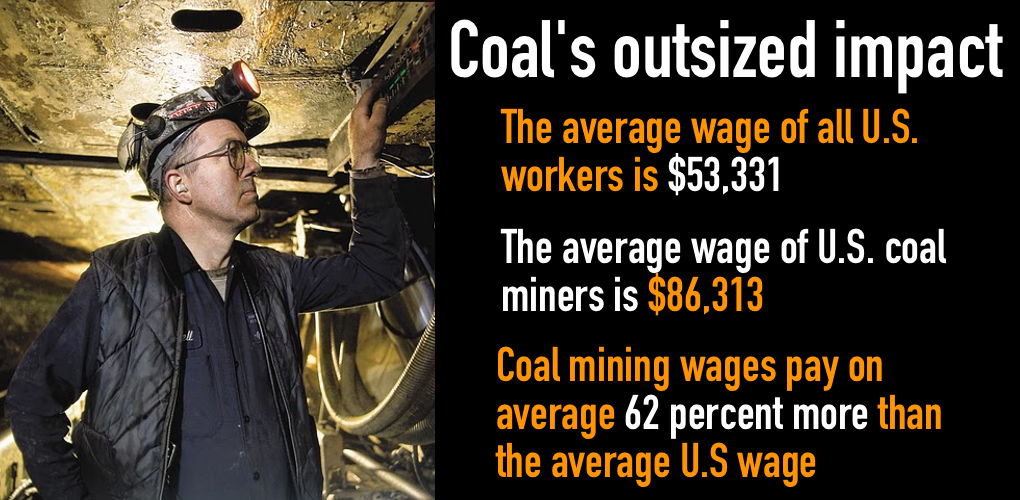
An Outsized Impact
Coal miners hold a special place in America’s collective consciousness. For years, writers and pundits have tried to identify the reason for coal mining’s importance in the American imagination and American politics. Theories abound. Maybe it’s fascination with work done underground in an atmosphere so foreign from most of today’s over-air-conditioned workplaces? Maybe it’s because the work miners do is rightfully recognized as deeply important to the nation’s energy security and economic health? There’s truth in both theories. But maybe the reason coal mining matters so much is rather simple: coal mining is an economic heavyweight in coal states and particularly in coal communities. After all, they’re called “coal states” for a reason.
A new report from the Bureau of Business and Economic Research at the University of West Virginia’s College of Business and Economics reminds us of just how much of an economic engine coal-mining remains in coal-producing regions. The report’s authors write:
“Statistics indicate that coal mining directly employs over 13 thousand workers in West Virginia who earn a total compensation of around $1.1 billion annually. Further, our estimates indicate that coal mines spend a total of around $6.5 billion in the state’s economy directly…. Our research indicates that coal mining generated around $12.9 billion in economic activity in West Virginia in 2017.”
These are impressive numbers but they also illustrate an ongoing challenge for the industry: just how many jobs are supported by mining and what is the full extent of the industry’s economic impact? No one database or agency captures the full picture. The Bureau of Business and Economic Research’s study, while useful, leans on U.S. Bureau of Labor Statistics (BLS) data. NMA’s own calculation of the mining industry’s economic impact in West Virginia relies on data from the Mine Safety and Health Administration to calculate direct, indirect and induced jobs supported by the industry. NMA found that in 2017 the coal-mining industry supported more than 48,000 jobs in West Virginia.
But number of jobs aside, it’s the per capita income of industry employees that is so important to this story.
The Bureau of Business and Economic Research’s report found that the West Virginia coal industry paid its workers an average of $85 thousand per year in 2017. As the authors highlight, this pay is nearly double that of the average annual pay of all other sectors in the state. According to the study, coal mining accounts for about 2.5 percent of all private-sector jobs in West Virginia but earnings from coal mining account for 4.8 percent of all private-sector earnings. Said another way, because the coal industry pays so well, the percentage of total earnings from coal mining is nearly double the percentage of West Virginians employed by the industry.
Coal mining remains a foundational industry. And to that point, as impressive as all these numbers are, they reflect state-wide impacts. Coal is only mined in select parts of the state. In coal-mining counties, the industry’s economic impact is many times greater. It’s frankly irreplaceable.
A year ago, a piece in The Washington Post pointed out that there are now fewer coal miners in the U.S. than employees at Arby’s. The thrust of the piece was why do we (the American people) care so much about an industry that by the numbers is far from extraordinary? And the numbers-driven answer is that coal-mining jobs and their economic impact are extraordinary.
According to BLS, the average wage of U.S. coal miners is $86,313. The average wage of all U.S. workers is $53,331. Coal mining wages pay on average 62 percent more than the average U.S wage, and this gulf between wages is even more pronounced in many coal states and coal regions where alternative, high-paying career paths are few and far between.
Often the most straightforward answers are the right ones. The U.S. coal-mining industry is so important – is so essentially American – because it matters so very much to the places it calls home.
- On August 8, 2018
